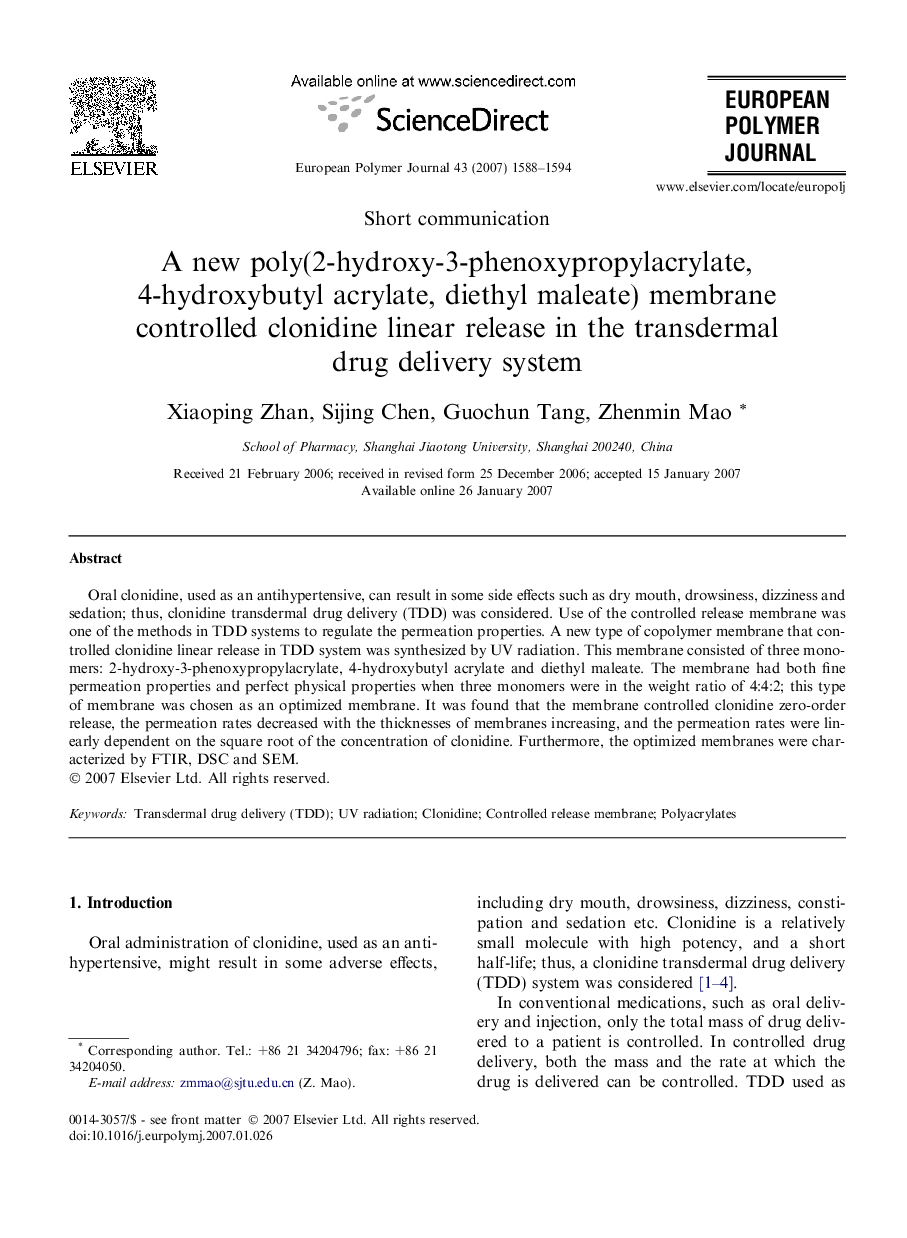| Article ID | Journal | Published Year | Pages | File Type |
|---|---|---|---|---|
| 1398584 | European Polymer Journal | 2007 | 7 Pages |
Oral clonidine, used as an antihypertensive, can result in some side effects such as dry mouth, drowsiness, dizziness and sedation; thus, clonidine transdermal drug delivery (TDD) was considered. Use of the controlled release membrane was one of the methods in TDD systems to regulate the permeation properties. A new type of copolymer membrane that controlled clonidine linear release in TDD system was synthesized by UV radiation. This membrane consisted of three monomers: 2-hydroxy-3-phenoxypropylacrylate, 4-hydroxybutyl acrylate and diethyl maleate. The membrane had both fine permeation properties and perfect physical properties when three monomers were in the weight ratio of 4:4:2; this type of membrane was chosen as an optimized membrane. It was found that the membrane controlled clonidine zero-order release, the permeation rates decreased with the thicknesses of membranes increasing, and the permeation rates were linearly dependent on the square root of the concentration of clonidine. Furthermore, the optimized membranes were characterized by FTIR, DSC and SEM.
